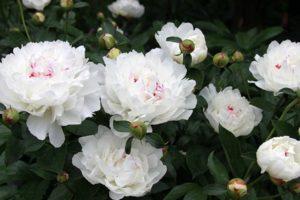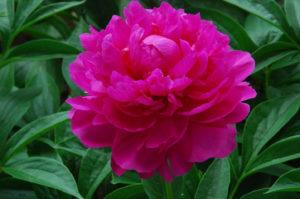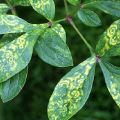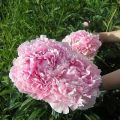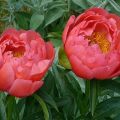Description and characteristics of peony varieties Red Charm, cultivation and care
The peony of the Red Charm variety has been familiar to flower growers since the end of the Great Patriotic War. Its popularity has only increased over the years. Beautiful red flowers against a gorgeous green background attract the eyes, and even the most demanding connoisseurs of spring splendor will appreciate the light delicate scent.
Description and features
Peony variety Red Charm is suitable for cutting and for decorating flower beds. It has a delicate aroma. The petals of the bud are of a correctly concave shape, forming a beet-red inflorescence. With the onset of autumn, the foliage turns purple. The flowers reach 20 cm in diameter. They are terry to the touch. The leaf plates do not have excessive shine, their color is light green.
Red Charm is characterized by a thick and strong stem, however, due to the severity of the buds, it still requires a garter. The height of the bush reaches 0.75 m. The flowering period falls on the end of May or the beginning of June (the exact time depends on the climatic characteristics of the region). Plant propagation is done by dividing the bush.
Breeding history
Red Charm is a variety of American origin, obtained in 1944. Since then, the peony is gaining more and more fans, attracting their eyes with its beauty and delicate aroma. The name itself means red charm. In China, this variety is considered a symbol of prosperity and happiness.
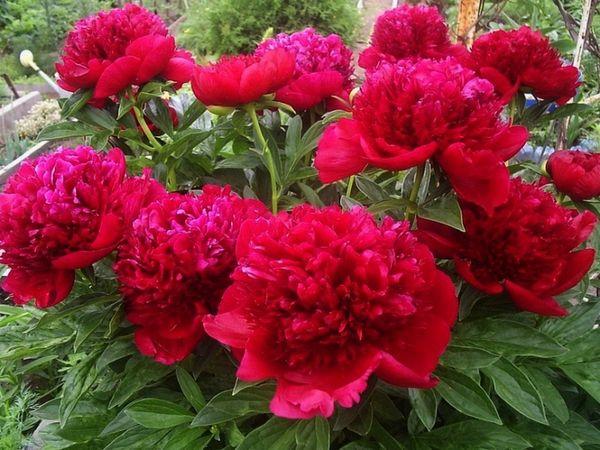
Landing
Planting peonies is similar to a similar procedure for bulbous perennials, but has its own characteristics.
Seat selection
Peony Red Charm is susceptible to fungal infections, so it is recommended to grow it in a well-ventilated place. The area should be well lit by the sun, and the soil is preferable with a drainage layer and compost. You cannot plant a flower near fences or walls of houses.
Soil preparation
If fertilizers have not been applied to the site, then before planting the Red Charm peony, the soil should be mixed with compost or other organic fertilizer. It is recommended to slightly oxidize the soil.

Timing
The most successful time for planting a Red Charm peony is considered the end of summer or the very beginning of autumn.
Landing scheme
When planting a peony, keep the distance between the bushes at least 1 meter. It is also taken into account that Red Charm grows well and is able to obscure small flowers or bushes.
Care
It is not difficult to take care of a peony, but in gratitude for the attention, he will certainly respond with gorgeous flowering.
Watering
In the dry summer season, the peony bushes are watered once every 7 days. Excess moisture leads to the development of fungus and root decay.
Mulching
So that moisture does not evaporate very quickly, and the soil under the bush does not crack, mulching is performed. Mown hay, dried grass, straw, needles are used as mulch.
Garter
The stems of the Red Charm peony are thick and stable, but still they cannot withstand the weight of the blossoming buds and need a garter. Wooden or metal pegs are installed along the perimeter of the bush, on which twine, nylon rope or wire are pulled in a circle.

Loosening and weeding
To provide the roots with air access, after watering and heavy rainfall, it is necessary to loosen the soil. As soon as they appear, weeds should be removed, weeding the area around the peonies. This will not only give them a well-groomed look, but also prevent weeds from taking nutrients and moisture from the ground.
Top dressing
The Red Charm peony should be fed in the third year after planting on the site. Immediately after the snow melts, urea is added (the recommended rates are indicated in the instructions). The second time the flowers are fertilized during budding. The third top dressing is done at the very beginning of flowering, adding nitrophosphate. 2 weeks after the end of flowering, superphosphate and wood ash must be added under the bushes.
Diseases and pests
Peony Red Charm is capable of being affected not only by viral, but also by fungal diseases. To prevent their appearance, it is necessary to carry out preventive measures in a timely manner. The most common diseases of these colors are:
- rattle;
- mosaic;
- mottling;
- gray rot;
- rust;
- cladosporiosis;
- septoria;
- root rot;
- powdery mildew;
- verticillary wilting.
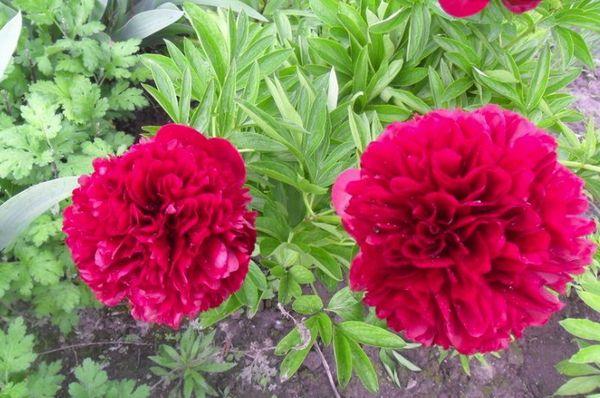
Some pests can cause irreparable harm to peonies, as a result of which it will not be possible to admire the lush flowering of the bushes. The most common ones are:
- ants;
- May beetles;
- aphid;
- nematodes.
We must deal with them immediately.
Preparation for wintering
Peony Red Charm refers to frost-resistant plants and hibernates in the open field. But even such a flower requires preparation for the cold, which consists primarily in feeding and pruning the bushes. Pruning is carried out after the onset of the first cold weather. It performs a sanitary function and prevents pests from overwintering in stems and leaves.
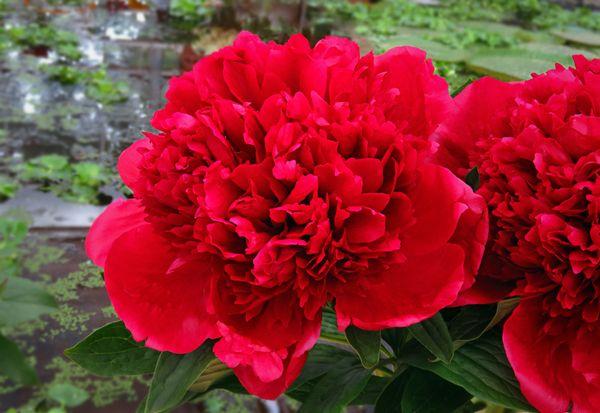
During autumn feeding, nitrogen fertilizers cannot be used, which can lead to the fact that the flower starts to grow ahead of time. Usually, only phosphorus and potassium are used as fertilizers before wintering. With the onset of the first frost, the trimmed peony bushes are spudded, and a layer of mulch with a thickness of at least 15 cm is laid on top.
Why does not it bloom
Sometimes Red Charm grows and develops normally, but the long-awaited flowering never comes. There are several reasons for this behavior in a flower.
Lack of sun
If the peony grows in partial shade or shade, then it will not be possible to achieve a riot of color from it. The plant is light-loving and can demonstrate all its beauty only in a well-lit area, where it is recommended to transplant it.

Little fertilizer
Over time, even fertile soil depletes the supply of nutrients, and on depleted soils, this process occurs even faster. Lack of trace elements and fertilizers is manifested in poor flowering or its absence. Peony Red Charm must be fed in a timely manner starting from the third year after planting.
Shrub is planted too deep in the soil
The deepened planting of peonies also leads to the absence of the formation of buds and flowers. You cannot make a hole deeper than 60 cm, otherwise the bush will not be able to fully develop, and all its strength will be spent only on building up green mass.
Use in landscape design
Landscape designers in their activities widely use the Red Charm peony variety to decorate garden paths, sidewalks or gazebos. Also, the plant is used to dilute the background of other colors, to create spectacular compositions. With its help, any site is transformed, becoming refined and charming.
